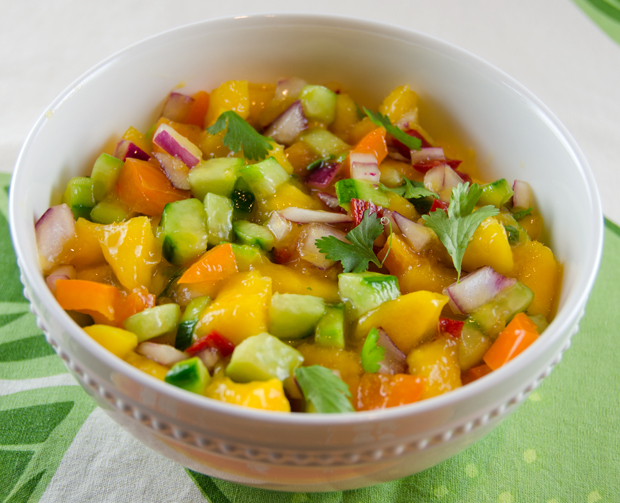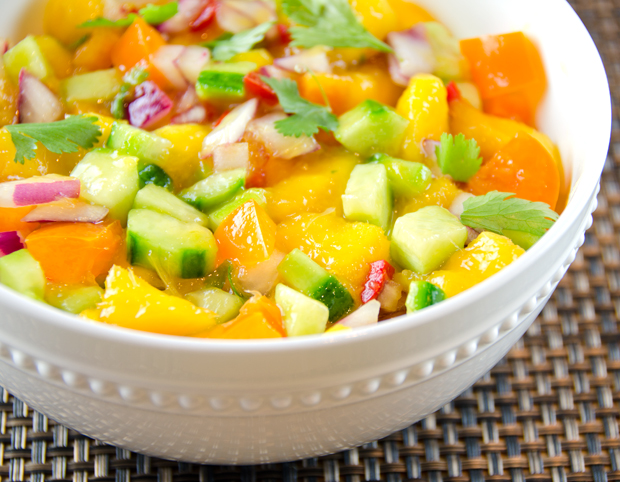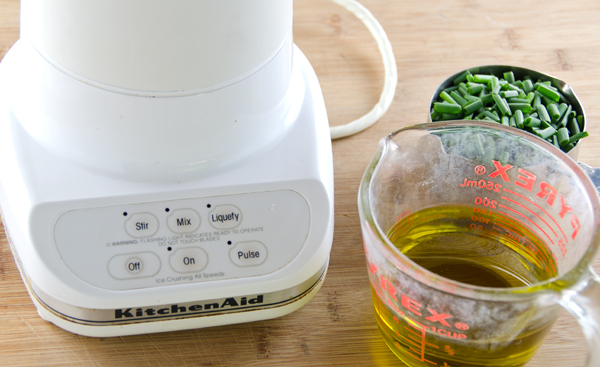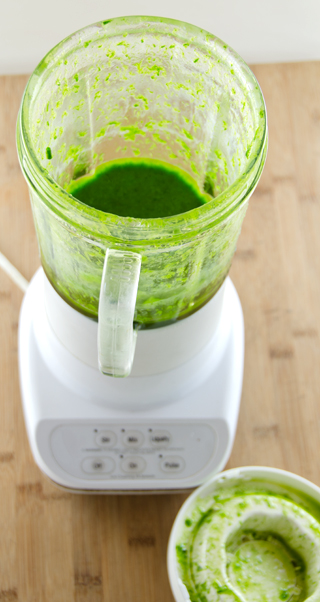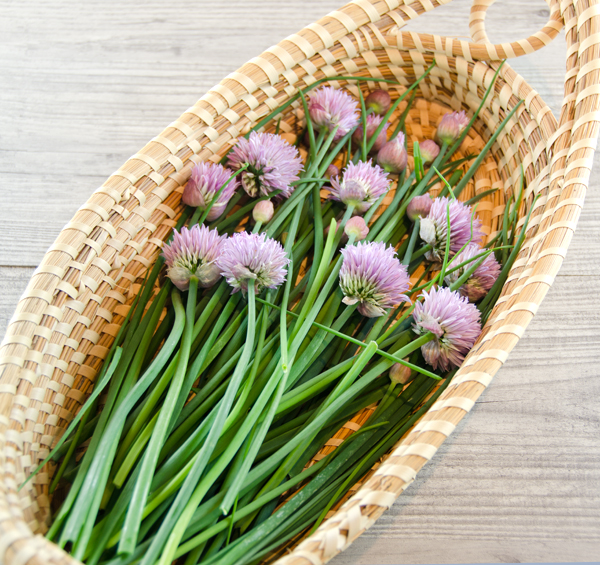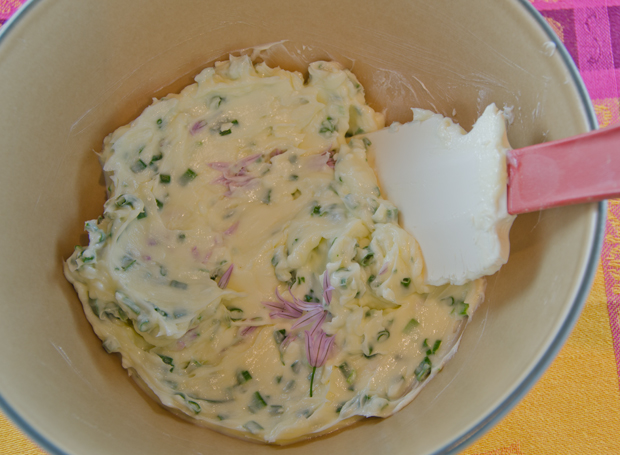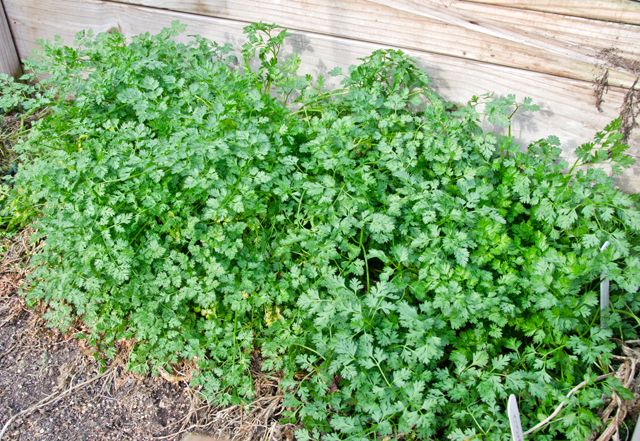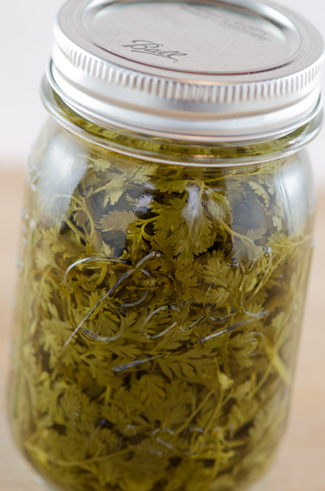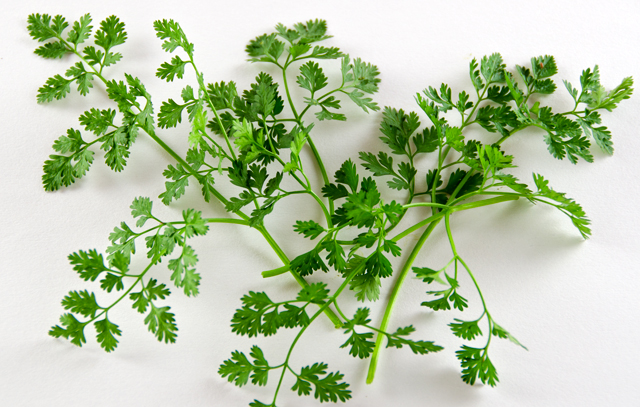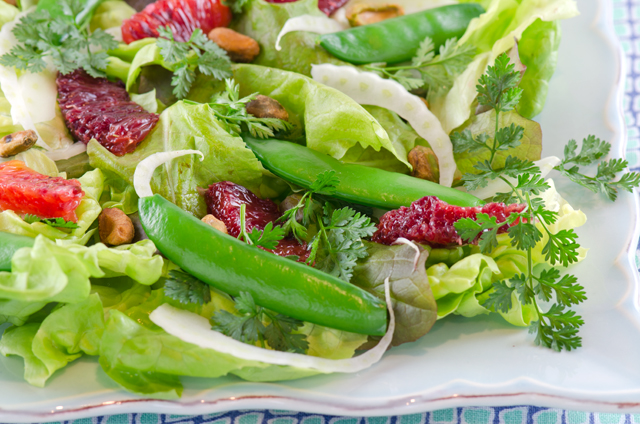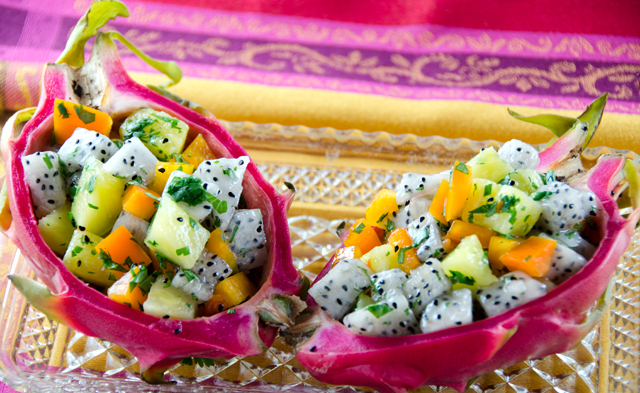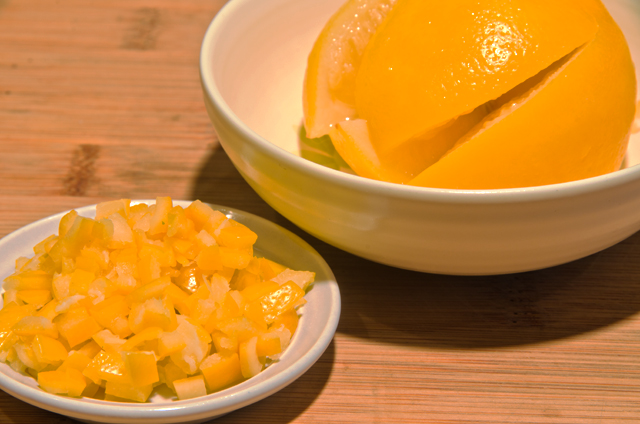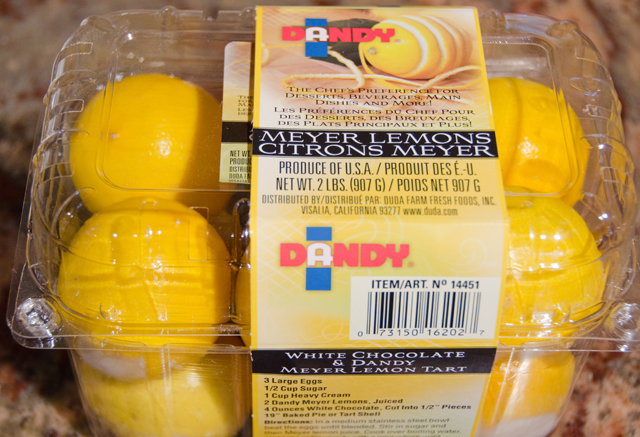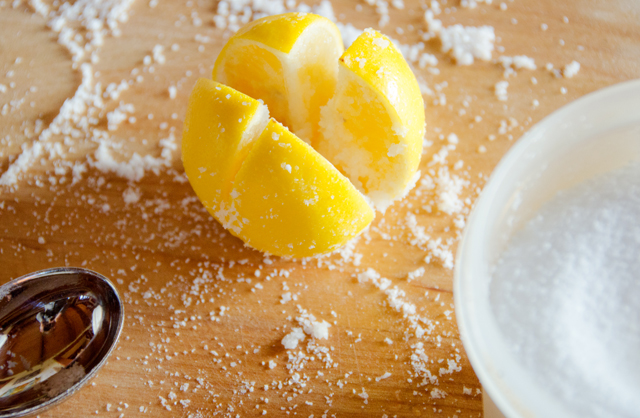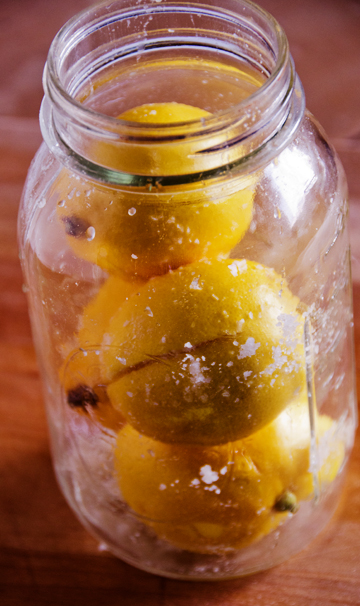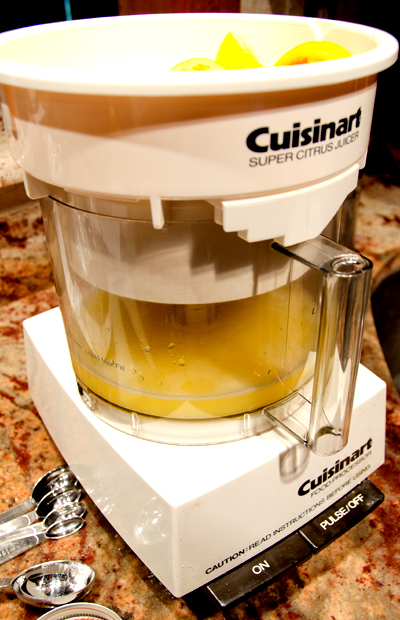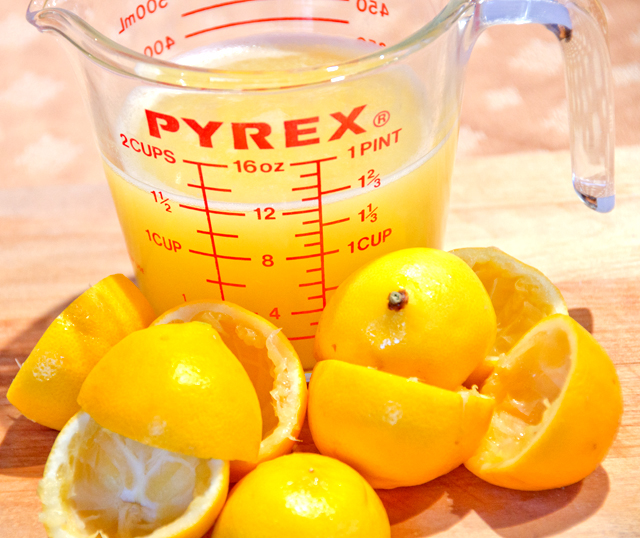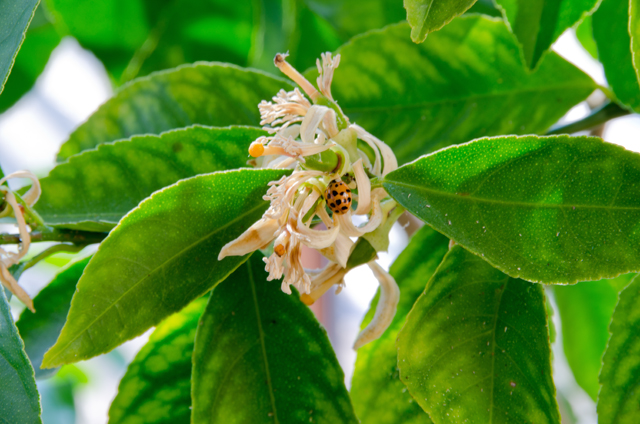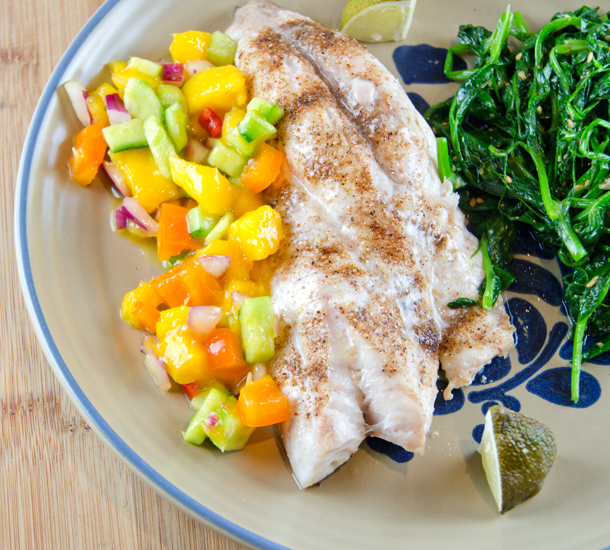 Firm white fleshed fish is a canvas on which many dishes can be created. With descriptors like clean, bright, and mild, the preparation can take you in many directions. A good pristine piece of fish can be prepared as simply with a little salt, pepper and a squeeze of citrus. You can also add a sauce and a rub and the flavors can transport you to the cuisine of your choice.
Firm white fleshed fish is a canvas on which many dishes can be created. With descriptors like clean, bright, and mild, the preparation can take you in many directions. A good pristine piece of fish can be prepared as simply with a little salt, pepper and a squeeze of citrus. You can also add a sauce and a rub and the flavors can transport you to the cuisine of your choice.
Our fish this evening was a yellowtail snapper fillet, named for the single yellow stripe that runs the length of the fish, even along the head. It is considered to be one of the best flavored snappers and since this very perishable fish made the trip up from Florida, I decided to “snap” one up.
I find that many people have a fear of cooking fish. They err on the side of overcooking it and the result is dry and flavorless. Perfectly cooked fish is moist and delicious. We have found a method of cooking fish that gives us consistently good results. In 1959, The Canadian Department of Fisheries and Oceans published a cookbook to help promote the country’s fishing industry. Popularized by late chef and food writer James Beard, they came up with a method of calculating how long to cook a piece of fish. Measure your piece of fish at the thickest point and cook at 10 minutes per inch or 1 minute per one tenth of an inch at 450°F. If you are baking a fillet, fold the thinner tail section under to maintain a uniform thickness. Check your fish a few minutes before the prescribed cooking time. It should be opaque in the center and cooked until translucency is gone. Also remember that the fish continues to cook from residual heat when first removed from the oven. To measure, any clean, well marked ruler will do. We still have our “Perfect Fish” that was patent pending in 1984 and not available now as far as my research found.
I decided to go in an island direction and prepared a Caribbean style rub and a simple mango salsa to accompany our fish. You can substitute red snapper, bronzino or sea bass for the yellowtail. It is important to note that your dish will only be as good as the fish you purchase. If you are purchasing whole fish look for bright, clear eyes. The flesh should be firm and shiny, not dried out. Ask to smell the fish if you need to, it should smell like seawater or nothing at all. Look for a dealer who properly handles seafood. My store of choice is Hellers Seafood in Warrington Pa, about 12 miles from my home. If I am planning to buy fish I bring a cooler filled with ice packs to keep the fish as cold as possible. Then it immediately goes in the fridge and used the same day. Just remember, no amount of sauce or rub will make a bad piece of fish taste any better.
Mango Salsa
Makes 2 cups
- 1 1/2c diced mango
- 1c diced cucumber
- 1/2c pepper (red, yellow or orange)
- 1/3c diced red onion
- 1 small red jalapeno, chopped, seeds and ribs removed
- 3T fresh lime juice
- 1/4c torn cilantro leaves
- 1T or more of Persian lime oil
- Kosher salt and freshly ground pepper to taste
Directions
- Combine all ingredients in a medium bowl. Add salt and pepper to taste.
Caribbean Rub for Fish
- 1/2 t allspice
- 1t cumin
- 1 1/2t thyme
- 1t onion powder
- 1t black pepper
- 1/2t salt
- 1/4t cayenne pepper (or to taste)
- 1t brown sugar
Directions
- Whisk all spices together in a small bowl.
- Sprinkle the spice rub over the fillet before cooking.
Canadian fisheries method of cooking fresh fish
General Directions
- Preheat your oven to 450°F.
- Measure your whole fish, steak or fillet at it’s thickest point.
- Bake fish for 10 minutes for every inch of thickness. The original instructions say to turn the fish over at the halfway point, you can, we don’t. If you check internal temperatures, it should be about 145°F.
